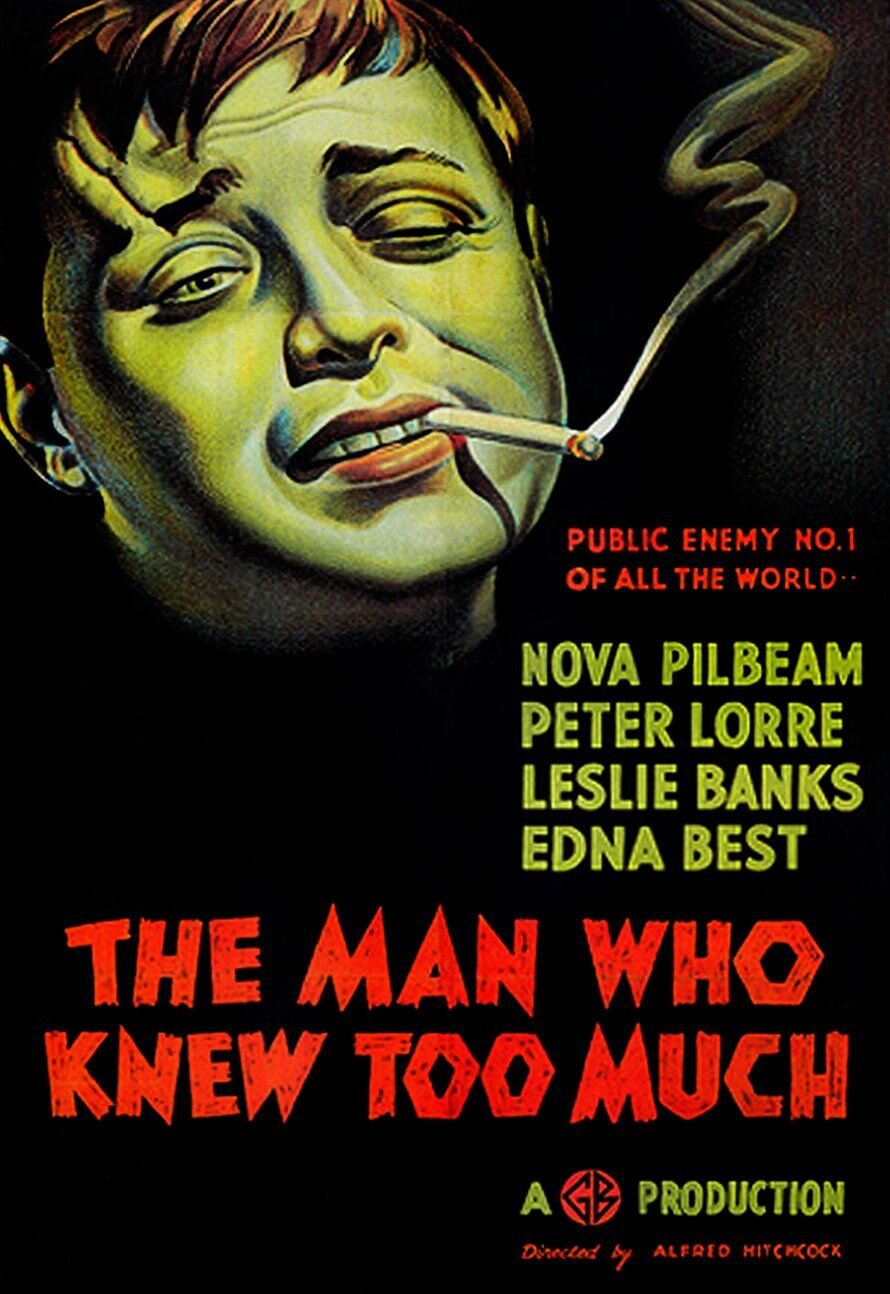Summary
When an American Family, vacationing abroad, gets mixed up in an assassination plot, the couple must choose between stopping an international coup or saving their kidnapped daughter.
The Film
Being familiar with the remake of this film by the same title and director, I knew I wanted to try and snag this original version of “The Man Who Knew too Much” during our Hitchcock series. I expected to not like it quite as much since the actors are less recognizable, with the exception of Peter Lorre, and I already knew the basics of the plot.
I have to say that I was quite surprised to find that, while I am not sure I prefer this version to the James Stewart one, I definitely like it a lot still and for different reasons. This is one of the rare examples I would point to of an original film and sequel that pair together quite well. They inform each other, share plot points, and even major sequence settings but they do them in different ways with just enough individual style to make each movie worth watching regardless of your feelings on the other one.
The earlier version I am reviewing today was made in 1934. It is one of Hitchcock’s British Thrillers and employs many of the same tricks for which Hitchcock would become known. There are great examples here of Hitchcock-ian camera work mimics the movements of the eye to help create a voyeuristic sensation to key sequences where we are tracking more than one character or a slip of paper being passed around, all seen from a single person’s vantage. This movement gives one the feeling that they are catching extra information out of the corner of their eye just the same way as are the characters who are slyly observing other people’s movements.
Another classic tool used here and in many other of Hitchcock’s films is the mistaken identity. In “The Man Who Knew Too Much,” the mistaken identity comes in the form of our couple who are mistaken for a British couple for whom a French Spy, Louis Bernard, is on the lookout. When he incorrectly guesses that the assassins are Bob (Leslie Banks, “The Most Dangerous Game”) and Jill Lawrence (Edna Best) the real killers figure out that he is on their trail and kill him. As Louis dies he tries to warn Bob and Jill about the assassination plot and the real assassins kidnap their daughter to keep them from sharing what they learned from the deceased French Spy.
Hitchcock has a fascination with the everyman or woman. Unlike the thrillers and action movie franchises that would borrow from him, such as James Bond, Hitchcock is not so much interested in the cop on his usual beat, the cat-burgler scaling the wall, or the spy as he skulks in the shadows. No. Hitchcock is interested in these things but only as seen from the point of view of the regular old Jack or Jill. What happens when the ordinary person is caught up in these worlds of excitement that they are unaccustomed to. They have different concerns than the career spy or police officer.
That is why this film, although its follow-up was familiar to me, still has legs. The individual situations surrounding the action are slightly different and lead the characters to make different choices. If every single plot point was the same I would have been bored but the thing that stayed the same wasn’t any particular point of action. It was that feeling of being in over your head and out of your depth. Whether it happens in Morocco or the Swiss Alps is not as important as putting a couple of parents in a situation that is every parent’s nightmare.
This focus on making his characters relatable to a regular audience member off the street is one of the things that makes Hitchcock’s movies so thrilling. It seems like they could happen to any of us with just a couple bad breaks of luck.
One of the things I liked best about this earlier version is the daughter played by Nova Pilbeam. Her character seems far more frightened and in genuine danger than in the James Stewart version. It seems like the American version Hitchcock made later in his career was more concerned with being relatable to American families as opposed to the British audiences of this one and he made the son more “likable” and added some lighter fare to the film to make it more palatable for Americans. I prefer the version where the the daughter’s fear and danger seems more genuine and in line with who we would expect someone her age to act if abducted as well as the more serious shootout nature of the final conflict. It certainly makes the plot feel all the more real for the fact that the plot has the potential to spill out into firefight.
The original version of “The Man Who Knew Too Much” may not employ any tricks you’ve never seen (you have seen them because every movie since Hitchcock has copied them) and by modern American standards the film may seem a little slow but if you are a lover of Hitchcock or the latter version of this same title, I am confident you will enjoy this one for many of the same reasons.
Review Written By:








